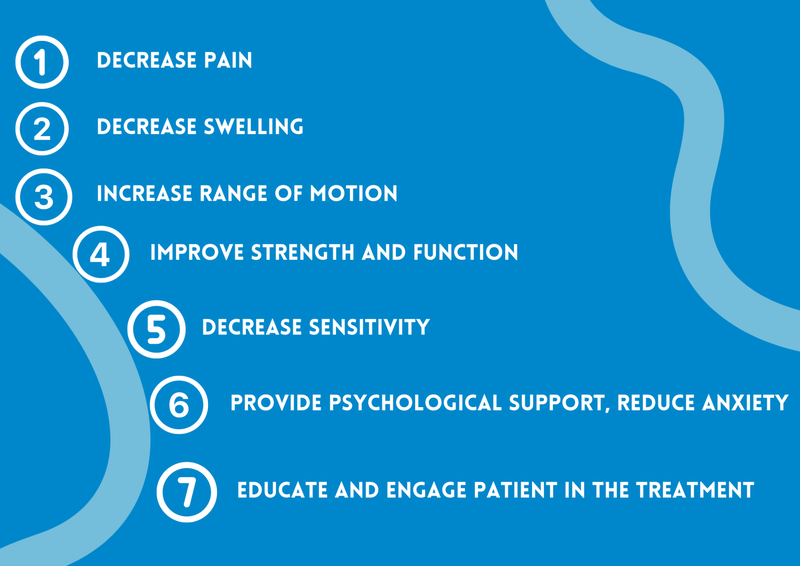Chronic Regional Pain Syndrome
(CRPS)
Chronic regional pain syndrome is a relatively rare condition affecting people after injury or surgery usually to hand or leg. It is a complex problem and it is sometimes difficult to diagnose it as it can be mistaken for other conditions causing pain like acute trauma, infection, arthritis or vascular insufficiency. Recognising the symptoms early and getting diagnosis and treatment early on can significantly increase the chances of good recovery.
What is Chronic regional pain syndrome or CRPS?
CRPS is a neurological condition presenting as chronic pain and affecting usually arm or leg. It has been also called Reflex Sympathetic Dystrophy (RSD), Sudeck's Atrophy or Causalgia. The Chronic Regional Pain Syndrome always starts with an injury - it can be a fracture, sprain, crash injury but it also often happens after hand or wrist surgery. It can sometimes take weeks or months after the injury/surgery before developing CRPS.
The CRPS affects women more than men and people who suffer from asthma, eczema, IBS, anxiety and PTSD are more likely to develop this condition.
If you had an injury to your hand or wrist and are experiencing ongoing pain with additional symptoms (mentioned further on) but your medical professional can't find a definite cause, it is very important to get referred to a pain specialist or an orthopaedic surgeon specialising in hands.
The early symptoms of CRPS are:
- pain - continuing pain that is disproportionate to the cause (pain is much more intense than what would be expected form the injury), usually burning in nature, can increase with movement, touch or any stress
- swelling in the area of pain
- changes in skin temperature - it can be hot and dry or cold and sweaty
- changes in skin appearance - it can be pale with blue hint or mottled red and shiny
- unusual hair or nail growth in the area
- stiffness in wrist and fingers
What are the stages of CRPS?
CRPS is a progressive condition and whilst the 3 stages of the illness overlap there would be some symptoms specific for each stage.
Stage 1 (acute stage) can last on average between one to several months. The main features in this stage are:
- usually burning pain, the affected area is disproportionately sensitive to stimuli like touch or movement
- swelling over affected area is soft and puffy
- movement in fingers or wrist becomes limited
- increased nail and hair growth in the area
- colour changes in skin - early on pale and blueish, later mottled or red and shiny
- increased sweating and coolness
- localised bone demineralisation (loss of bone density) starting at the wrist
Stage 2 (subacute stage) can last on average between 3 to 9 months. The main symptoms at this stage are:
- pain still most significant feature, aggravated by attempts at particularly passive movement
- swelling becomes hard and brawny, hard to get rid off with standard methods
- further limitation in movement, especially the middle knuckles of the fingers, and contractures can develop (claw hand)
- decreased nail and hair growth in the affected area
- colour changes in the skin - red and shiny appearance, cool to touch
- progression of demineralisation of the bone in wrist and fingers
- muscle wasting / atrophy due to inactivity
Stage 3 (chronic stage) from about 9 months and can last for 2 years or sometimes longer. This stage is also called Atrophic phase and its main features are:
- pain can become worse, stay the same or sometimes it gets better
- marked bone, muscle and skin atrophy - bones become brittle, muscles are wasted and weak and skin looks pale dry and glossy
- thickening of the joints
- limited movement, contractures
- sometimes the whole limb becomes affected
What is the treatment for the CRSP?
To treat CRPS efficiently a multidisciplinary holistic approach is essential. Hand therapist, pain specialist, surgeon, GP, psychologist, family and support groups are all important for successful recovery. Physical therapy and use of modalities, exercise, pain medication, assisting with coping strategies , cognitive behavioural therapy can all be very useful for treating the CRPS.
The choice of therapy is fully dependant on the stage and the symptoms and will vary for each individual patient . Generally the main principles of the treatment that should be followed are:
Useful links
Cork based CRPS FORUM is an online support forum with good resources for further information and advise.
Hand therapy for CRPS
Hand therapy is one of the most important parts of your treatment. In our clinic the treatment will be very much tailored to you and it might include:
- hydrotherapy
- electrotherapy or ultrasound
- kinesiotaping
- accessory and joint mobilisation
- active exercises and functional activities
- desensitisation
- splinting
- mirror therapy
- myofascial release / massage
IT IS VERY IMPORTANT TO MAKE SURE THAT ALL TREATMENT IS PAIN- FREE.
Do let your therapist know if anything you are doing as part of the therapy hurts.





